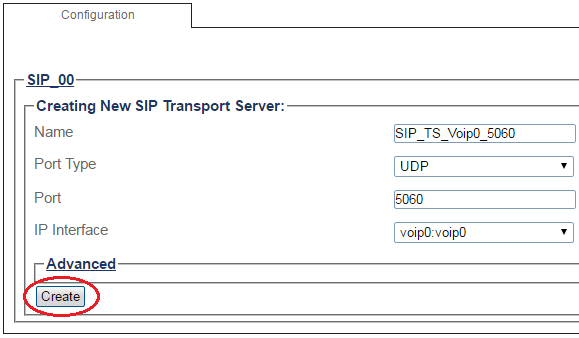Toolpack:Creating a SIP Transport Server SBC A
From TBwiki
(Difference between revisions)
| Line 1: | Line 1: | ||
| − | |||
{{DISPLAYTITLE:Creating a SIP Transport Server}} | {{DISPLAYTITLE:Creating a SIP Transport Server}} | ||
| + | |||
| + | {| class="wikitable" | ||
| + | |- | ||
| + | |rowspan="3"|This article applies to: | ||
| + | |'''Product''' | ||
| + | |'''Version''' | ||
| + | |- | ||
| + | |SBC | ||
| + | |3.0, 3.1 | ||
| + | |} | ||
| + | |||
After you create a SIP stack, you must must create a new SIP transport server for your SIP configuration. | After you create a SIP stack, you must must create a new SIP transport server for your SIP configuration. | ||
Latest revision as of 09:53, 29 December 2020
| This article applies to: | Product | Version |
| SBC | 3.0, 3.1 |
After you create a SIP stack, you must must create a new SIP transport server for your SIP configuration.
Note: In order to employ SIP transport servers, the protocol that they will use to transport the SIP signaling traffic must be defined.
To create a SIP Transport server:
1- Click SIP in the navigation panel
2- Select a SIP stack for which you wish to create a transport server
3- Click Create New Transport Server
4- Create the new SIP transport server:
- Enter a name for the server
- Select an appropriate port type
- Select an appropriate host IP interface
- Click Create
5- Verify that the "SIP transport server was successfully created" message appears, and that the new server is listed in the Transport Servers list




